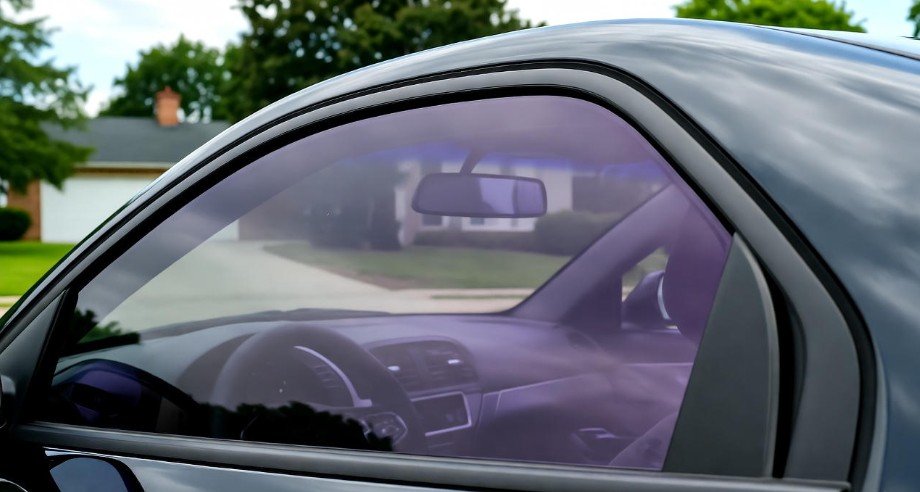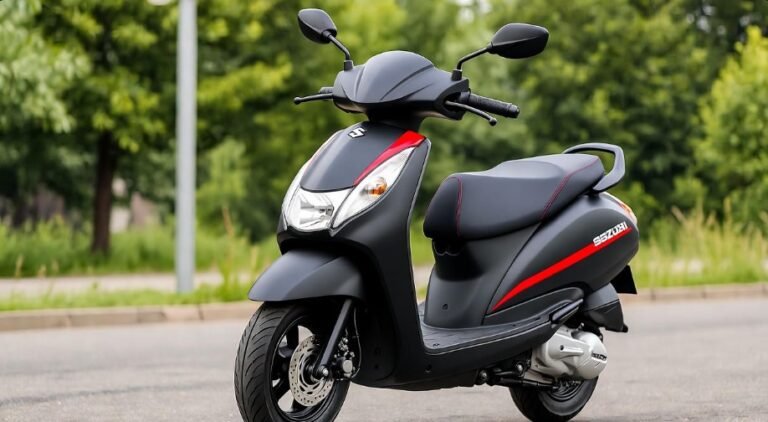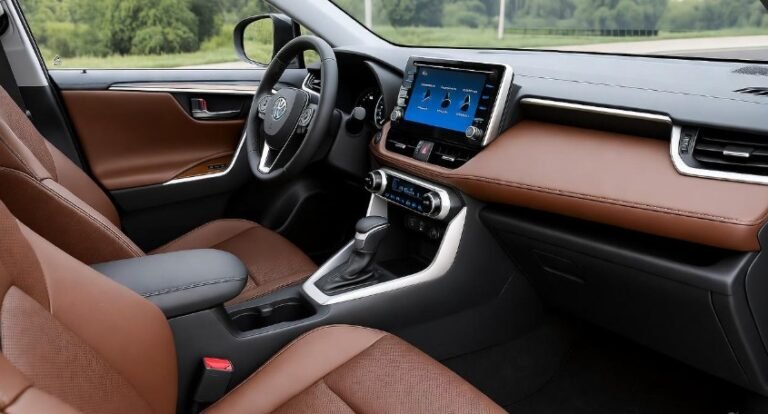20 Percent Window Tint Meaning With Real Life Examples

When it comes to vehicle customization, window tinting is one of the most popular choices among car owners. But what does a 20 percent window tint actually mean? Simply put, a 20% tint allows only 20% of visible light to pass through your car windows, blocking the remaining 80%. This level of tint offers a sleek, dark appearance that gives your vehicle a stylish edge while also providing privacy. However, there’s more to this seemingly simple figure than meets the eye. From legal restrictions to real-world driving experiences, understanding the implications of 20% tint is essential for anyone considering it for their car.
Many car enthusiasts are drawn to 20% tint because it balances privacy, style, and protection. Yet, this darkness can create challenges, especially when driving at night or in low-light conditions. Before making a decision, it’s crucial to weigh the pros and cons and understand how this tint behaves in everyday scenarios. In this article, we’ll dive deep into everything you need to know, from its visual appearance and practical use to costs, comparisons, and real-life examples that illustrate why some drivers love it and others proceed with caution.
What 20 Percent Tint Really Looks Like
One of the first questions people ask is, “How dark is 20% tint?” From the outside, this level of tint looks quite dark. People walking past your car will find it challenging to see inside, which enhances privacy. From the inside, your view is still decent during the day, but objects outside may appear slightly blurry or distorted, especially if sunlight is dim or obstructed by clouds.
Imagine sitting inside a car on an overcast day. The world outside doesn’t disappear, but it feels like you’re looking through a soft veil. This is why many drivers describe 20% tint as a “privacy shield” rather than a total blackout. While it may make your car look like a sleek, urban cruiser, it also comes with the trade-off of reduced visibility in certain conditions.
Real-life example: John, a Michigan driver, installed 20% tint on his rear and side windows. He loves how no one can peek into his car at the grocery store or parking lot, but he admits that backing out of his driveway at dusk requires extra caution because the view through the rear window is darker than he expected.
Legal Considerations: Where 20% Tint is Allowed
Here’s the reality: not all tints are legal everywhere. In most states, 20% tint is too dark for front side windows. Only a few states, such as Michigan and New Mexico, legally allow 20% tint on front windows. For side and rear windows, laws vary, so checking local regulations is critical to avoid fines or penalties.
Breaking tint laws may seem like a minor offense, but it can create headaches if you’re pulled over or involved in an accident. Law enforcement may require you to remove the tint, and repeated violations can lead to hefty fines. Many drivers don’t realize that while rear windows often have more leniency, front windows are strictly monitored due to safety concerns.
Real-life example: Sarah in California attempted 20% tint on her front windows, thinking it would match her rear windows. Within a week, she received a warning from local authorities and had to have the front tint replaced with a lighter film. She now sticks to 20% tint only on her rear and side windows, staying within the legal limits.
Benefits of 20 Percent Window Tint
A 20% tint is more than just a dark film—it offers several practical benefits:
-
Privacy: People passing by can’t see into your car easily, providing peace of mind when leaving belongings inside.
-
Glare Reduction: This tint significantly reduces glare from sunlight or headlights, making daytime driving less stressful.
-
Heat Reduction: Blocking 80% of light can also reduce heat buildup inside the car, making the cabin cooler in summer months.
-
UV Protection: High-quality tints can block harmful UV rays, protecting both your skin and the car’s interior materials.
While the privacy and style aspects are immediately noticeable, the comfort benefits are often appreciated most in everyday driving. On a sunny afternoon, a 20% tint can make your car feel like a personal sanctuary from the harsh glare and heat outside.
Real-life example: Carlos, a Miami resident, noticed that after installing 20% tint, his car remained noticeably cooler during afternoon commutes. He also mentioned that he no longer needed to squint against the sun, making his drives much more comfortable and relaxed.
Challenges and Visibility Issues
Despite the perks, 20% tint comes with visibility challenges, especially at night or in low-light conditions. While driving in daylight is usually fine, night driving can be tricky. Shadows, poorly lit streets, or tight parking spots may become difficult to navigate.
Some drivers compensate by rolling down windows when reversing or parking at night. Others adjust their driving habits, preferring well-lit routes. It’s important to remember that while 20% tint provides style and privacy, safety should always be the priority.
Real-life example: Lisa in New Mexico enjoys the privacy of her 20% tinted car but always rolls down her rear window when backing into parking spots after dark. This minor adjustment ensures she avoids accidents without compromising the overall benefits of her tint.
20 Percent Tint vs. Other Percentages
When choosing a tint, comparing percentages helps in making an informed decision.
| Tint Percentage | Light Transmission | Privacy Level | Night Visibility | Heat & Glare Reduction |
|---|---|---|---|---|
| 20% | 20% | High | Moderate | High |
| 25% | 25% | Medium | Better | Moderate |
| 30% | 30% | Medium-Low | Good | Moderate |
20% vs. 25% tint: 20% is slightly darker, offering more privacy but slightly reduced visibility compared to 25%.
20% vs. 30% tint: 20% is noticeably darker, providing maximum privacy and heat reduction, but night driving may require extra caution.
Real-life example: Mike installed 25% tint on his front windows and 20% on the rear. He finds the rear tint excellent for privacy, while the front 25% tint balances visibility and style, especially during night drives.
How Much Does 20% Tint Cost?
The price of 20% window tint depends on multiple factors:
-
Vehicle size and number of windows
-
Quality of the tint film
-
Installation complexity
-
Location and shop rates
On average, expect to pay $100–$200 for a standard sedan. Larger vehicles like SUVs or trucks may cost more, especially if premium films with UV protection or heat-blocking capabilities are chosen. Shopping around and comparing quotes ensures you get the best deal without compromising on quality.
Real-life example: Jordan, who drives a mid-sized sedan, spent around $180 for 20% tint on all windows. He opted for a high-quality brand that promised heat reduction and UV protection. Two summers later, he still praises the tint for keeping his car cool and stylish.
Real-Life Examples of 20 Percent Tint in Action
Understanding how 20% tint performs in everyday life can help you decide if it’s right for your vehicle.
Example 1: Urban Commuter in a Busy City
Emma drives in downtown Chicago every day. She installed 20% tint on her rear and side windows primarily for privacy and glare reduction. During rush hour, bright sunlight reflecting off skyscrapers used to make driving stressful. Now, the tint softens the glare, making her daily commute more comfortable. However, she notes that at night, streetlights and headlights from other cars sometimes appear more intense due to the contrast, which requires extra attention.
Example 2: Heat Management in Hot Climates
David lives in Phoenix, Arizona, where summers can be brutal. His 20% tint drastically reduces heat buildup inside the car, cutting the need for maximum AC usage. On sunny afternoons, he feels the difference immediately when stepping into the car, describing it as “walking into a cooler sanctuary.” The dark tint also keeps his belongings out of view, adding a layer of security while parked.
Example 3: Nighttime Driving Adjustments
Nina, a New Mexico driver, enjoys the aesthetics and privacy of 20% tint but admits it challenges her visibility at night. To compensate, she always rolls down the rear windows when reversing or parking in tight spaces. This small adjustment ensures safety without sacrificing the advantages of darker tint during the day.
Is 20 Percent Tint Worth It?
Deciding whether 20% tint is worth it depends on your lifestyle and driving conditions. Here are some factors to consider:
-
Privacy Needs: If you often leave items in your car, 20% tint is excellent for shielding them from prying eyes.
-
Climate Considerations: In hot, sunny areas, this tint significantly reduces heat and glare, increasing comfort.
-
Night Driving: If you frequently drive at night or in low-light areas, the darker tint may pose visibility challenges.
-
Local Laws: Ensure your state allows 20% tint on the windows you intend to apply it to avoid fines or penalties.
For many drivers, the balance of privacy, style, and comfort outweighs minor inconveniences. It’s about prioritizing what matters most—whether that’s keeping cool in the summer, maintaining privacy, or simply achieving a sleek look for your vehicle.
Maintenance Tips for 20 Percent Tint
To keep your 20% window tint looking great and functioning effectively, proper maintenance is key.
-
Cleaning: Use a soft microfiber cloth and non-ammonia-based cleaner to avoid damaging the film.
-
Avoid Sharp Objects: Be cautious with keys or tools near tinted windows to prevent scratches.
-
Regular Inspection: Check for bubbling, peeling, or discoloration over time and address issues promptly.
-
Professional Repairs: If damage occurs, it’s best to have a professional handle it to preserve the integrity of the tint.
By following these maintenance tips, your tint will last longer and continue to provide privacy, glare reduction, and heat control.
Comparing 20% Tint to Other Common Tints
Choosing the right window tint percentage requires understanding how small differences affect your car’s appearance, privacy, and safety.
| Tint Level | Light Allowed | Privacy | Heat Reduction | Visibility at Night |
|---|---|---|---|---|
| 20% | 20% | Very High | High | Moderate |
| 25% | 25% | High | Moderate | Better |
| 30% | 30% | Medium | Moderate | Good |
| 35% | 35% | Medium-Low | Moderate | High |
From this comparison, it’s clear that 20% tint prioritizes privacy and heat reduction over night visibility. In contrast, lighter tints offer better visibility but less privacy and heat control. Real-world decisions often involve compromise depending on climate, driving habits, and personal style preferences.
Common Myths About 20 Percent Window Tint
There are several misconceptions about 20% tint that can mislead car owners:
-
Myth 1: “You can’t see anything through it.” – In reality, daytime visibility is quite good; the darkness mainly affects low-light conditions.
-
Myth 2: “It’s illegal everywhere.” – While many states restrict front window tint, some states like Michigan and New Mexico allow 20% on front windows.
-
Myth 3: “It blocks all sunlight.” – 20% tint blocks about 80% of light, not all. Some sunlight and UV rays still penetrate, though heat reduction is significant.
Understanding the facts helps avoid poor decisions and ensures drivers can enjoy the benefits without unnecessary concerns.
Frequently Asked Questions
1. Can you see through 20% tint at night?
Yes, but it can be challenging in low-light conditions. Rolling down the windows when reversing or parking can improve visibility.
2. Is 20% tint legal in all states?
No. Most states restrict 20% tint on front side windows. Michigan and New Mexico are exceptions. Always check local laws before installation.
3. How much does 20% window tint cost?
On average, it ranges from $100–$200 for a standard sedan. Prices vary based on vehicle size, quality of film, and installation fees.
4. What are the advantages of 20% tint?
Key benefits include enhanced privacy, reduced glare, heat reduction, UV protection, and a stylish appearance.
5. Can 20% tint damage car windows?
No, proper professional installation ensures the film does not damage the glass. Avoid sharp objects and clean gently with appropriate cleaners.
6. Is 20% tint too dark for city driving?
It depends on ambient lighting. In well-lit areas, it’s fine. Extra caution is needed at night or in poorly lit spaces.
7. How does 20% tint compare to 25% or 30%?
20% is darker, providing more privacy and heat reduction but slightly less visibility. 25% and 30% tints are lighter, offering better night vision but less privacy.
8. Can I install 20% tint myself?
DIY installation is possible but challenging. Professional installation ensures a smooth, bubble-free finish and adherence to legal regulations.
Conclusion
A 20% window tint is a popular choice for car owners seeking a balance of style, privacy, and comfort. It allows only 20% of light to pass through while blocking the remaining 80%, providing a dark, sleek look for your vehicle. While it enhances privacy, reduces glare, and keeps your car cooler, it can pose visibility challenges in low-light conditions.
Before installing, it’s essential to check your state’s legal regulations, especially regarding front windows. Maintenance is simple but important to keep the tint in good condition. Real-life examples show that with proper precautions, 20% tint can transform your driving experience, offering both aesthetic appeal and practical benefits.
Ultimately, whether 20% tint is worth it depends on your priorities—privacy, style, heat reduction, or visibility. By weighing the advantages and potential challenges, you can make an informed decision and enjoy your tinted vehicle safely and legally.





